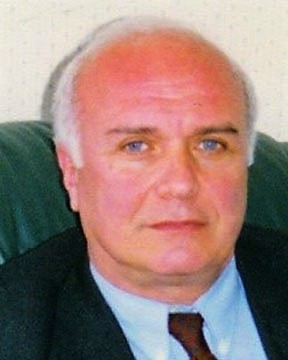 |
Paata KervalishviliGeorgian Technical UniversitySpintronic And Spinqubit Nanostructures For Quantum Devices 7th Intl Symposium on New & Advanced Materials and Technologies for Energy, Environment, Health and Sustainable Development Back to Plenary Lectures » |
Abstract:Today when Moore law gradually loses its effect and conventional charge-based electronics will soon come to the end development of high speed and low energy consuming information systems is urgently needed. Up to now, many new methodologies have been proposed, such as molecular electronics, nanoelectronics, spintronics, magnetronics, optronics, etc. Modern Electronics (Micro Nano Spin Electronics) and its future mainly based on novel materials (metals and nonmetals), their preparation technologies and new properties. Perfection and ultra-purity are not the only parameters characterized materials usefulness for quantum devices. Modification of material properties by different structural nonperfections (structural defects: impurities, isotopes, etc.) is the smart instrument for regulation of their characteristics. Based on difference from conventional electronics e electron’s which uses the electron’s charge degree of freedom for information processing, spintronics is devoted to incorporating the electron’s spin degree of freedom. Despite its great potential advantages, spintronics now faces a number of challenges, such as generation of fully spin-polarized carriers (pure spins) and injection of spin into devices, long distance spin transport, and manipulation and detection of carriers’ spin orientation. The solutions to these issues rely on the development of device fabrication and designing new spintronics materials with specific properties. [1]. Pure spin generation and injection mainly depends on the degree of spin polarization in the used semiconductors or metals. Thanks to the discovery of carbon based nanomaterials such as graphene [2] and carbon nanotubes, the challenge of long distance spin transport is likely to be solved in the near future. Because of their very weak spin–orbit coupling (SOC), carbon-based nanomaterials can have a long spin coherence length up to a few micrometers, thus are very good spin transportation materials. According to their electronic and magnetic properties, spintronics materials can be classified as magnetic metals, topological insulators, and magnetic semiconductors In a spintronic device, magnetic metals and topological insulators, serve as spin sources and drains, while magnetic semiconductors constitute the central region of the device.[3]. At the same time usage of electron spins as quantum bits for quantum information processing in so called quantum computers, were a qubit exists in more than one state simultaneously, is clear. Qubits in this state display a degree of correlations impossible in classical physics. This phenomenon is called entanglement and is crucial property of quantum computing. The main requirements of quantum computation are: Scalable physical systems with well characterized qubits (Zeeman Spliting); Long decoherence time: Existence of qubits at the ground state; Set of quantum gates; measurement capabilities, etc. Candidate for a qubit needs longer decoherence time than gate operation time. The transformation of digital computers from bulky machines to portable systems has been enabled by new materials and advanced processing technologies that allow ultrahigh integration of solid- state electronic switching devices. As this conventional scaling pathway has approached atomic- scale dimensions, the constituent nanomaterials increasingly possess properties that are dominated by quantum physics. [4]. The convergence between quantum materials properties and prototype quantum devices is especially apparent in the field of 2D materials, which offer a broad range of materials properties, high flexibility in fabrication pathways and the ability to form artificial states of quantum matter. Along with the quantum properties and potential of 2D materials as solid- state platforms for quantum- dot qubits, single- photon emitters, superconducting qubits and topological quantum computing elements it is necessary to select a the best method of their preparation. Potential of laser plasma process for 2D materials preparation, particularly its usefulness for organization of nanostructures applicable in spintronic and quantum computing devices novadays is actively developing. Laser plasma formed under the ionizing effect of powerful laser radiation on the thing. For example, LP arises during optical breakdown in gaseous media, laser radiation on top solid body, in laser thermonuclear targets. LP can exist in a wide range of temperatures - from 1 eV to 104 eV (104–108 K) and arising as a result of ionization of the electron impact with the subsequent image electronic avalanche, or as a result of many photon ionization. The impact of a light wave on LP leads to the formation of plasma waves (coil -ny electronic and ionic densities), which interact with the primary and scattered light. As a result, electric magnetic waves are formed with a frequency that is a multiple of the frequency of the incident light this wave (the so-called harmonics). The probability of generating high harmonics increases with an increase in intensity of laser radiation. |
|